




















Legacy is something that is passed on. It could be in the form of money, a set of core values, one’s own ethics, one’s reputation, or it could be in the form of artifacts. The only thing about leaving a legacy is that the value to what you are leaving behind is more valuable to you than to those you are leaving it to. One important legacy is your reputation.

When we are long gone, our children will be able to pick up this magazine and read our stories. They will be able to hear our voices reach out to them from the world beyond.
Teachers, as a new school year starts your legacy will be written in the walls, halls, ears, and hearts of those children that you will call students. Be mindful of your words. Teach the hearts of those students and know that your smile, laughter, dumb jokes, and the knowledge you share with them in the form of instruction will never be forgotten because unknowingly this is your legacy that you will leave on Earth. Teaching is not the easiest job but seeing the smiles of those students as they walk in on the first day of school makes all the difference in the world.
This year we begin our 2nd year of publication of Teacher’s Making a Difference magazine, and this is our legacy. May I leave words that touch your hearts and souls. May the work that we have put into this magazine speak volumes about our character as teachers, mothers, sisters, daughters, friends, and wives.

Rivette and I started this magazine because we wanted our kids, those we have mentored and those we have given birth to, to know that our words in the articles and in the books that we have written are our legacy to them.
I pray that my words in this magazine are the rocks that cause the ripples of love towards your students and your career. Have a Blessed 2023-24 school year!
Designers: Rivette Pena
Stephane Bowker
Contributing Photographers and Stock Libraries: Adobe Stock

Unsplash
Andy Dominguez
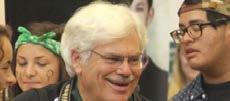
Advertisements: Dr. Cathy Coker



Marketing: Alicia Grace
Thank you to Stephane Bowker at Working Dog Resources for providing tailored training for the layout of Teachers Making a Difference.




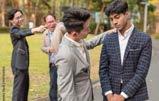

In the July issue of our Magazine, the wrong picture was attached to a feature article. Rebekah Owen’s picture was connected to Elizabeth Breau’s article “Plan Less Expect More” while Rebekah’s article “Reflecting on the Impact of Relationships” was not included in the issue. In order to rectify this terrible mistake, we will be rerunning Elizabeth Breau’s article with the correct picture and run Rebekah Owen’s article in this issue.
Once again, we apologize for any inconvenience this has caused.
Sincerely,
Rivette Pena Co-Editor Dr. Rebekah Owens, PhD
Dr. Rebekah Owens, PhD

It’s not about what the agents think you should have when it comes to supplementing any medical needs, it’s about choosing a plan that will provide the client with a quality of life that they need and deserve.
After speaking to Mr. Gilbert Moreno I know that I will let him help me choose a supplemental plan for me when I retire! I trust him and I know he will take good care of my medical needs with honesty and integrity.

He believes that an individual should know what they are choosing. He says that he does not sell but educates his clients. By educating the client on the different Medicare plans the client chooses what’s best for them and their family.

Phone (210) 772-9387
Gilbert Moreno

gilbertjr@gbmoreno.com
As a Transformational Leader Gilbert teaches his agents how to Plant Seeds as well.
He teaches them on the importance of educating their clients on the different Medicare plans and how to use them effectively.


Joe McQueen is currently Principal of alternative education for the Regional Office of Education #33. He has over twenty years’ experience in the field of mental health. He was an LBS1 teacher, special education coordinator, and a residential treatment specialist. Joe is also an author and has been working as a dynamic trainer and speaker for the past five years, presenting at national conferences and working with various schools in west central Illinois.

Joe is a U.S military veteran (GO NAVY), a husband of over 20 years and a father to 3 amazing daughters. He has happily dedicated the last 25 years working and teaching in the field of special education with an emphasis on students with mental and emotional needs. He started working in a residential treatment center (RTC) in 1999 after honorably discharging from the Navy. He worked with kids ages 6-14 with severe mental and emotional struggles. Many had been victims of horrific abuse. During this time, he completed his undergraduate degree as a learning behavioral specialist (LBS1) at Illinois State University (home of the Red Birds). After graduation Joe taught a 4th-6th grade self-contained behavior disorder class (now called emotional disabilities). During this time he also became certified to do drug and alcohol counseling while working at an RTC on a Gang unit, outside of Chicago for 16-19-year-old
inmates’ wanting to get a sentence reduction or early parole. Joe was a teacher by day, councilor by night for 5 years.
Joe eventually moved into the high school setting and had helped develop behavioral programs for a co-op elementary schools.
In 2010 Joe was offered a job in sunny Phoenix Arizona. He worked at a day school for 6 years where he was an IEP coordinator, transitions coordinator and teacher. After weathering the heat a few years, the prospect to move North, away from the inferno summers of Phoenix, arose. Joe saw opportunity knocking – and answered the door. He was able to return to his first love - RTC work. He spent 5 years as the Director of Education at an all-girl RTC located in the secluded mountains of Prescott Valley, Arizona. At the time, this was one of the top facilities in the nation for sexually exploited teens.
Joe feels that he has been blessed that most of his career has been spent working with teens in the gang, substance abuse, and the sexually
exploited population. He is passionate about this population and want to offer them a positive and supporting voice.
He currently the director of alternative programming for the Regional office of education in Galesburg Illinois. I over see two campuses with over 100 students all in alternative programs for various reasons, from expulsion, sever acting out behavior and anxiety or truancy.
Joe’s book “Calming Young Minds - Understanding Mental Health, De-Escalation, Trauma, and Restorative Practices in Teens” is a culmination of years of work and love.
If you’re an educator or social worker who wants to make a real difference in the lives of struggling teens, Calming Young Minds is the book for you. Written by Joseph S. McQueen, an education consultant, with over 20 years of experience working with at-risk youth, this book offers a unique perspective on understanding mental health, deescalation, trauma, and restorative practices in teens.
the director of alternative education for the Regional Office of Education #33. I have over twenty years’ experience in the field of mental health. I was an LBS1 teacher, special education coordinator, and a residential treatment specialist. I am an author and have been working as a dynamic trainer and speaker for the past five years, presenting at national conferences and working with various schools in Illinois.
Author of the Book: Calming Young Minds
Mental Health, De-Escalation, Trauma, and Restorative Practices in Teens

Book Available on Amazon
Joe McQueen
Ph: 623-210-1541
jmcqueen@roe33.net
theraputicperspectives@gmail.com
www.theraputicperspectives.com
ROE#33 Principal/Director

Social Media
fb/CalmingYoungMindsBook
IG/thebookcalmingyoungminds
in/joe-mcqueen-360729240
McQueen’s book delivers an authentic, researchbased approach to understanding and working with kids who struggle with social-emotional issues.
Unlike other books on the topic, Calming Young Minds draws from real-world experience and practical, research-based solutions that have been tested and proven effective in the trenches of the classroom. McQueen knows firsthand what it’s like to work with kids whom others have written off, and here he shares his hard-won insights and strategies. With strikingly positive feedback from educators and social workers who have attended his training and presentations, McQueen’s book is both practical and inspiring. Whether you’re a teacher, social worker, or another professional who works with kids, Calming Young Minds is an essential resource for understanding and supporting the emotional needs of today’s youth.
Calming Young Minds is a call to action for anyone who cares about our children’s and society’s future. Available now on Amazon paper back and Kindle
This training is intended for administrators, teachers, school staff members, school support, youth workers, social workers and all the people who work with kids who wish to understand more about the process of restorative practices and the benefits it has on the whole school culture and climate.
Restorative Practices is an alternative response to misbehavior, harm, or misconduct that brings together all persons involved in conflicts in a personalized way that allows individuals to address damages, accountability, move past shame and/or guilt, and develop solutions to rebuild stronger and restored relationships with each other, where communication, personal reflection, accountability and respect take a key role in growth moving forward.
Recognize the key principles, concepts and practices of a whole school approach to restorative practices
Experience the circle process and review the elements of facilitating circles Learn a

and conferences
model for implementing and supporting restorative
practices in your school
Learn to engage in developing and applying a restorative plan that addresses systems, and learning
Develop skills to guide your school through the restorative change process

This training is intended for administrators, teachers, school staff members, school support, youth workers, social workers and all the people who work with kids who wish to understand more about the process of and the benefits it has on Trauma Informed De-Escalation benefits the whole school culture and climate.
De-escalation is what should be exercised during a crisis situation in an effort to prevent a person from causing harm to you, themselves or others.
Verbal De-escalation consists of differentiated strategies to help minimize the number/length of crisis as well as prepare people to deal with difficult issues.
How crisis impacts the brain and body
How does brain development in teens influence crisis and de-escalation? What is the role of trauma?
Tips for dealing with youth in crisis who may have trauma
How to make a difference through relationships and therapeutic understanding?
This Mental Health Awareness training is intended for administrators, teachers, parents, support providers, and people who wish to understand more about mental health conditions and chal- lenges that are common in childhood so that children can be better supported and positive mental health can be encouraged in the home and at school.
To raise awareness of mental health issues in childhood and how to appropriately address them. By the end of this course, learners will: Understand what is meant by 'mental health'.
Have an understanding of some of the most common mental health problems.
Understand ways in which people can help others manage their individual mental health to make everyday living easier.
Be aware of how to support a people with a mental health problem in the centers and at home.
Understand how to promote a healthy, non-discriminatory growing environment.
Have knowledge of the environmental and home adjustments that can be made to help a child with a mental health problem.


www.theraputicperspectives.com
This training explores the value of boundaries and offers guidance for developing, promoting, and maintaining healthy boundaries in work role and setting. Boundaries are built upon a trusted relationship that supports open communication and the sharing of information. Boundaries are intended to support professional relationships, while identifying limits around appropriate behav- iors in working relationships. Good boundaries encourage people to seek and maintain culturally and age-appropriate boundaries across areas such as self-disclosure, relationships, communica- tion, confidentiality, language, respect, behavior, and beliefs.
Communicate to staff what constitutes both healthy and unhealthy relationships and how to set boundaries with students/clients in a positive learning environment.
Develop understanding of how professional boundaries are the legal, ethical and organizational frameworks that protect both clients and employees, from physical and emotional harm, and help to maintain a safe working environment.
Demonstrate how good boundaries offer structure and limits while offering certain freedoms and encouragement.
Guide educators to know that effective boundaries can help them avoid the frustra- tions likely in more coercive, win-lose approaches.
www.theraputicperspectives.com
With the start of a new school year around the corner, I can always remember reaching the moment my ‘batteries’ were recharged and my readiness to once again receive those students through the front doors of the school.
The lack of appreciation for what we do, the inadequate pay, the challenges of the job that bring you the most anguish are all miniscule compared to the positive influence that we have on the children we serve each day.
I can also remember that it didn’t take long for my colleagues and I to feel overwhelmed by the workload or the special situations that we had around the school that made for challenging moments. It always helped me at the times I was the most troubled or had little energy to give my best to the job to focus on the kids.





Some of our kids have been waiting all summer for something positive to return to their lives.
Don’t ever forget that... Blessings and best wishes for a tremendous school year!


 by Elaine Clanton Harpine, Ph. D
by Elaine Clanton Harpine, Ph. D
A very bright third-grade child walked into my reading clinic one day in total despair. He was unable to read even the easiest first-grade books. He was also totally convinced that he would never be able to learn to read. Less than a year later, he was devouring chapter books. He was very proud of being able to read, and carried a book with him everywhere he went.

What made the difference? Teaching method.
A 5th grader was reading between the 2nd and 3rd grade level with very low comprehension when he came to me for tutoring. After 21 weeks of onehour, once-a-week tutoring using vowel clustering, he was reading at the 6th grade level with strong comprehension scores.
Each of these students were taught using my one-on-one tutoring method from my newest book: Why Can’t We Teach Children to Read: Oh, but Wait, We Can, A Step-by-Step Plan for Teaching Your Child to Read. This book has everything needed to teach any struggling student to read. It’s written for parents, teachers, and tutors. Works for all ages, even adults. If you have questions about the book or how to teach from the book, contact me.
What made the difference? Teaching method.
A 15-year-old learned to read before she graduated from high school. She had failed for nine straight years. The school had tried balanced literacy, reading recovery, and even one-on-one systematic phonics tutoring. She was reading at the pre-kindergarten level when she entered my reading clinic. She knew consonant sounds, but she did not know any of the vowel sounds when she started with me. With vowel clustering, she learned to read in 3 ½ years.
Summer is a great time for tutoring students who are struggling in reading. I use vowel clustering with all of my students.

Vowel clustering teaches struggling students to both see and hear different vowel sounds. The vowel center organizes words by sound. The vowel center also demonstrates visually how the same letters can combine but represent different sounds.
An example from the book illustrates how we can help struggling students by using a vowel board. Students can match words with vowel sounds. The EA vowel cluster makes a good example for how to use the vowel board. This is a preview from p. 84:
Copyright © Elaine Clanton HarpineIf you have questions about using a vowel board, contact me. I am always happy to help. Contact me at clantonharpine@hotmail.com
Have a great summer.
 Dr. Elaine Clanton Harpine, Ph. D.
Dr. Elaine Clanton Harpine, Ph. D.
“… every ea sound is different, and only three of the sounds are actually e sounds: eat, breakfast, hear The ea combination uses the long vowel sound for ē in the word eat, the short vowel sound for ĕ in the word breakfast, and the ear (îr) sound in the word hear The words break, heart, and tear [tear paper] all use letter a sounds (break ā, heart är/as in car, tear âr/air sound), and the word earth uses the ûr sound.” I pointed to each section on the ea vowel strip as I explained these different sounds. Then, we practiced the 4 steps with each word.”

Under a different title this was originally written in 2016 as a Book Review for my Masters in Education training at Concordia University Irvine, California.
unconstitutional, etc. Its leaders tell us that their way is the only way, and that compromise and negotiation are not to be considered.
Whether you are pursuing your passion as a solo player or are fortunate to have genuine support from students, colleagues, administrators and parents, please continue to pay it forward by identifying what works, do it and share it. Document your progress because this is solid evidence of your creative and effective proficiency which can fuel the trajectory along your career pathway.
Introduction
The Tea Party movement and others are clamoring for change in public education. Daily, members of the National Education Association receive NEA Briefs which provide reprints of newspaper articles from states ranging from Wisconsin, to Ohio, to Idaho, Indiana, Florida and others. Lately these articles report the progress of this movement to remove teachers’ ability to collectively bargain for pay, working conditions, etc.
This movement works up the emotions of people who blame government programs for our nation’s massive debt and under-performing schools. They blame and condemn those who champion workers’ rights as monopolists, communists,
They believe that the government they control has the answers. So much so that Scott Walker, Wisconsin’s newly elected republican governor was recorded saying, “’I don’t budge,’ Walker promised… He explained that he would increase pressure on state workers by threatening thousands of them with layoffs. He said he considered planting instigators in the crowd to stir up trouble.” (Milbank, 2011)
Demands for change in public education are nothing new and where this current tsunami of emotion will take us, I do not know. What I do know is that those in public education are responding to federal and state and community mandates and requests to change education in their districts and local schools. Again, this is nothing new but the heat is being turned up and today more accountability is being demanded from public education which is under-staffed and underfunded.
We earthlings often need to feel pain before we choose to make changes - be they personal or institutional. Whether it be a Tea Party, teacher layoffs, the number of high school students not graduating or graduating without basic life
skills, the pressure is on and some changes are being made… for the better. Stephen R. Covey, #1 bestselling author or the 7 Habits of Highly Effective People (1989), in his book
The Leader in Me (2008) shines the spotlight of attention on numerous successful schools in the United States and elsewhere.

Covey’s book is really an action plan based on the PIA (Plan, Implement, Assess) model that is prescribed to Concordia University education students for use in curriculum development. In his opening shot he entices us with 11 pages of testimony from parents, teachers, students, principals, superintendents, and community leaders attesting to the successes being enjoyed at schools using an integrated mix of Covey’s 8 Habits (he added one more to his original 7) and the management principles of former Regan Secretary of Commerce Howard Malcolm Baldridge.
In 1999 Covey tells us he was approached by Muriel Summers who asked him if he thought his 7 Habits could be taught to a 5 year old. Responding positively, Covey told A. B. Combs Middle School Principal Muriel Summers that he thought so and asked her to let him know if she tried. Faced with losing her North Carolina magnet school due to low enrollment Muriel and her team surveyed parents to determine what they wanted. To meet their needs her team chose to comprehensively integrate Covey’s 7 Habits into their curriculum. This devoted team took the school from near collapse to be the nation’s number one magnet school. How they and other schools are accomplishing this is detailed in this book.
Covey’s purpose in the book is to entice and welcome other schools to follow suit and enjoy similar success. The salesman in me believes it is possible to sell a product that has been proven to meet the needs of a target market that admittedly recognizes their need.
Covey, being an accomplished educator and
marketer, understands this and now presents us with the opportunity to make history as another successful school to which parents will drive the extra mile to have their children attend.
It requires enough of a ground swell at a prospective school site to get the necessary buyin to implement this plan. I have copied the pages of testimony in the book and have given them to my site’s four administrators and the principal of one of our elementary schools. As I learn more I will share more with my site, the district office and the community. The Covey and Baldridge based The Leader in Me project’s website provides numerous links to examples and resources (https://www.leaderinme.org).
Milbank, D. (2011, May 1) MILBANK: A truly unreasonable man. North County Times. Retrieved from http://www.nctime.com
Covey, S. R. (1989) 7 Habits of Highly Effective People. New York, NY: Simon & Shuster, Inc. Fireside.
Covey, S. R. (2008) 7 The Leader in Me. New York, NY: Simon & Shuster, Inc. Free Press.
Author’s Postscript:
This is important enough to repeat. Whether you are pursuing your passion as a solo player or are fortunate to have genuine support from students, colleagues, administrators and parents, please continue to pay it forward by identifying what works, do it and share it. PLEASE let me know what works for you.


 by Elizabeth Breau, Ph.D.
by Elizabeth Breau, Ph.D.
The best learning often takes place unexpectedly. I entered teaching at the university level, and although I put a great deal of thought and effort into designing my syllabi for each class, I almost never planned my lessons. Instead, I began most classes with a version of the question, “So, what did you think of the reading?” Usually, a thoughtful discussion would ensue.
I had similar experiences at an all-boys Catholic school. I gave periodic plot-based reading quizzes to ensure the students actually read and assigned essays about each book, but I gave no thought to what would happen during each class period. Discussion usually took care of itself, as when the boys in a summertime high school gender studies class debated the masculinity of male soccer players who shaved their eyebrows.
When I took my one and only public school teaching job, however, my habit of winging my way through class based on how the students responded to the assignment came to a wretched end. Suddenly, I was required to submit two weeks of carefully structured lesson plans and indicate how they matched various curriculum standards.


My first non-university teaching job was at a Jewish day school whose seventh and eighth grade English teacher had quit six weeks into the school year because the eighth grade boys were so awful. There were no books. I knew absolutely nothing about what a seventh or eighth grade curriculum should look like, so I taught Peter Pan, Treasure Island, Black Beauty, and The Outsiders because I had read them at that age. No lesson plans were required, and although I eventually added grammar and vocabulary components to the curriculum, I continued not to plan how I would teach the books until I arrived in class.
The tenured teachers in my department circulated a template that everyone used without ever changing any of the pre-printed goals or standards. I filled it in as often as I had to and ignored it as much as possible. However, my wellhoned teaching style, which had won me stellar reviews and an award at previous jobs, was also stymied by word wall requirements (I taught in four different classrooms) and being written up for “not displaying student work.” So, instead of actually teaching The Bluest Eye, I had to create an arts and crafts assignment that wasted weeks of class time and taught nothing.
Poster projects yielded similarly dismal results: one or two paragraphs of text surrounded by pretty pictures and crooked block lettering does not encourage critical thought about a complex novel in nearly the same way that an essay does. It’s coloring, and coloring is generally not considered part of a rigorous high school English curriculum.
he had not yet turned any of it in. Six weeks later, after several more quizzes and short assignments, he asked to “see my F.” I showed him his B+.
Elizabeth Breau, Ph.D. (she/her), is an awardwinning writing coach and private English tutor. Her book, History According to SAT: A Content Guide to SAT Reading and Writing, won a silver medal in the teen category from the Nonfiction Authors Association. You can reach her at historyaccordingtosat.com.

Instead of dumbing down English instruction with arts and crafts and No Fear Shakespeare, I suggest that English teachers raise standards instead of continuing to lower them. Tell the story of Romeo and Juliet ahead of time if you must, but teach it in its original Elizabethan English. Read Huckleberry


Finn in the original and ask the students whether they think it should be censored or discussed. Expect more of them, not less.
One student at that public school tried to drop my AP Literature class because he was failing. I refused to sign the form because I did not know whether he was capable of doing the work since
At the beginning of every school year, I reflect on my past educational experiences. Usually, a former teacher comes to my mind, and almost always, I am reminded of a high school math teacher, Mrs. Otersen. Why? She was one of the most gracious and influential teachers in my life. Despite my difficulty with processing and computational math errors, Mrs. Otersen worked patiently with me—my memory of her encouraging me through gentle and patient instruction. At the time, I did not realize how this would affect me personally, spiritually, and professionally. The relationship that she fostered with me still permeates my nostalgic memories.
Research consistently shows that positive teacherstudent relationships significantly impact students and teachers (Corbin et al., 2019). The researchers attributed positive emotions likely to influence teachers’ feelings of personal accomplishment (Corbin et al., 2019). A group of middle school teachers was observed providing positive interactions with students, and those teachers reported higher job satisfaction (Corbin et al., 2019). The correlation is two-fold, both for the student and the teacher. Researchers suggest that teachers confident in their abilities to teach, assess, and manage classroom behavior may be more likely to engage in practices that lead to supportive and secure relationships with students (Hajovsky et al., 2020). The benefits of strong relationships extend to you as well!


Many of us have someone who has been influential in our lives. Who is that person for you? What makes them special to you? What have they done for you and how have they shown their care for you? Is it a teacher?

Strong relationships characterized by trust, support, and effective communication contribute to students’ sense of belonging, self-esteem, and classroom participation (Siegle et al., 2014). A focus group of 28 students revealed that their interest and motivation in high school were attributed to their teachers. Effective teachers can influence students’ growth and encourage extensive depth of learning (Hajovsky et al., 2020; Siegle et al., 2014). Because the students trusted in the teachers, the teachers could delve deeply into in-depth discussions and partake in various instructional strategies. For positive relationships to flourish, the top three areas teachers need to foster are warmth, empathy, and responsiveness (Hajovsky et al., 2020; Siegle et al., 2014).

students can have a significant impact on both their educational journey and their overall lives. You have the power to make a meaningful difference.
Corbin, C. M., Alamos, P., Lowenstein, A. E., Downer, J. T., & Brown, J. L. (2019). The role of teacher-student relationships in predicting teachers’ personal accomplishment and emotional exhaustion. Journal of School Psychology, 77, 1-12. https://doi.org/10.1016/j.jsp.2019.10.001
Hajovsky, D. B., Chesnut, S. R., & Jensen, K. M. (2020). The role of teachers’ self-efficacy beliefs in the development of teacher-student relationships. Journal of School Psychology, 82, 141-158. https://doi.org/10.1016/j.jsp.2020.09.001
Siegle, D., Lisa, D. R., & Mitchell, M. S. (2014). Honors Students’ Perceptions of Their High School Experiences. Gifted Child Quarterly, 58(1), 3550. https://doi.org/10.1177/0016986213513496

Thinking back to my high school math experience, you and I may never see the seeds planted in our students’ lives. Mrs. Otersen has never seen me in my educational role (for nearly two decades), but she greatly impacted me. She went beyond the lesson plans, assignments, and assessments and sought to build a strong student-teacher relationship, and for that I am truly thankful.
As you embark on the school year and prepare to teach and care for students in your classrooms and in your life, please keep these observations in mind. Dear teacher friends, it is essential to remember that investing time in building relationships with your students is valuable. The relationships you build with your









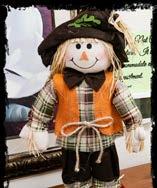


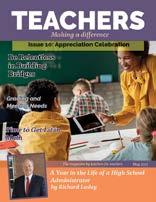



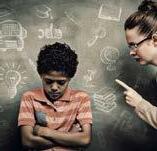

At the end of the day,what will you leave behind? Will you be remembered for the papers you graded, the forms you filled out or the number of grades you put in the gradebook? How well decorated your room was or how well you were dressed? NO!


Over the years I received many notes from students for teacher appreciation and other holidays. Notes that other teachers prompted. But nothing made my day more than unsolicited purely genuine comments from students.
I wish I had saved more but here are a couple I came across this week. A student who is in her early 20’s now reached out to me after she read my article in the July issue “I Walked Away From Teaching After 27 Years and Never Looked Back”. This is what she had to say:
Students remember how you made them feel. They remember emotions. They remember kindness and reassurence. The way you made them feel successful. The way you could make a 65 seem like an A+. How safe they felt in your classroom. Those are the things they remember.

Hey Miss Pena I just read your story and it broke my heart:( I just wanted to let you know you deserve so much better and you were the absolute best teacher and you have a big heart of gold and you made such a big impact on my life and 100 of other students and after all these years I never got to thank you for that...I just personally wanted to tell you thank you and I really appreciated everything you did.
This made me so happy I spent so many years teaching. It makes the sacrifices seem worth it. I love all my kiddos (what I call my students). I have been lucky enough to see some find their way to teaching. To teach along side someone I once taught. That is a wonderful feeling. I can only hope I touched the hearts of my students and I somehow helped to shape their future.
I had a teacher that shaped my life. We all have that teacher that we wanted to be. Well mine was Ms. Lewis. She was well past her retirement age. She wore a wig and was very strict. I loved her. You see when I was in her class, I was 10 years old and I was very poor. One day we were told that we would be going on a field trip and we needed to bring a lunch. I had to return the permission slip to my teacher and let her know that I would not be able to attend. She asked me why and I started crying. You see, back then you had to pay for field trips and pack your own lunch. My mother said she could write a check for the field trip money but we didn’t have enough food to make a lunch to take with me. So I told my teacher all about it. I was so embarrassed and she just listened and told me not to worry that I was going on the field trip. The day of the field trip, I found that I had a special lunch in the lunch crate with my name on it and an ice cold soda wrapped in foil in the ice box. As I looked over at her eating her lunch she had the same ice cold soda wrapped in foil and awesome lunch that I had. She allowed me to keep my dignity and never mentioned it again. I will always be appreciative of that. She allowed me to be a child with no worries, even if for just one day.


I’ve always wanted to teach with that in mind. I wanted to children to have their dignity. I never pushed anyone for school supplies. I always had everything they needed when they walked into my classroom. I fed them if they were hungry. I left them alone if they needed room. I gave them a shoulder to cry on if they needed one. All while teaching the hell out of mathematics. I always wanted to spread my love of math to all my kiddos.
I came across another note in a memory on Facebook. This student moved on from my class and went on to highschool. This is what she had to say:
Dang I don’t even know whwhere to start, Ms Pena I’m speechless on how AMAZING you are. In my lifetime, I can say that you and my 7th grade math teachers are the BEST. I’m not so good at math and year you have made it so much better, you have given me so much hope that I can and will make it thru high school. You and Ms. Vincent are the best math teachers in the world and believe me when I say that I hope that yall do’t miss me as much as I’m going to miss yall because I dont’ think that if I go back to your classroom, I won’t be able to get out. It’s an honor to say in the times I was having most trouble in math my teachers were there to help me and make sure that I got it and I did. Keep being the AMAZING teachers that yall are. Stay safe and God Bless yall. Hopejully I see yall in the future as well, I’m hoing to see yall and I will make yall pround in math and other things.
This warms my heart. My students are my teaching legacy. To them I leave lessons of respect, kindness, joy and laughter. And of course my love of math.
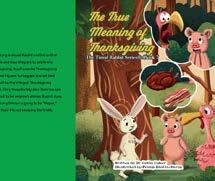



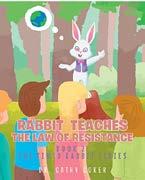

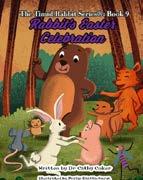







is an only child has more than two pets
is older than you has travelled outside of our city
is left handed plays an instrument has travelled outside of the US
speaks more than one language
wears contacts
is younger than you are
is the oldest child is the youngest child
can ride a bike
has driven a car
has ever had surgery has ever broken a bone
has ever won something has no pets has ever been on television
has ever been on a team
rides a skateboard
likes to sing
likes to draw likes to write stories
Dr. Parker’s specialty is supporting school leaders and teachers to build trusting relationships with students. He provides strategies to improve culture and climate to enhance the education experience for staff and students.
With over 25 years of experience, Dr. Parker has held the roles of...
• Teacher | Dean of Students
• Asst. Principal of Student Life

• Asst. Principal of C & I
• Asst. Principal of Activities & Athletics
• School Principal
Dr. Parker holds a Doctorate Degree in Education and his Superintendent License. His PD is offered nationally through keynotes, workshops and corporate retreats. He is also the author of, Building Bridges: Engaging Students Through the Power of Relationships.

• Effective strategies to diffuse challenging students’ misbehavior through relationships.

• Foster a relationship building mindset.
• Recognize risk factors.
• Employ protective factors for A.C.E. students.
• Teach students to demonstrate resiliency after making poor choices or unintended mistakes.
• Provides educators with tools to check biases.
• Advance culturally responsive teaching skills.
• Enhance physical, mental and emotional health.
• Recognize signs of burnout and secondary trauma.
• Proactively manage anxiety and stress.
Dr. Parker presents on many different topics in a variety of areas. We never have a problem filling his sessions, as his outstanding reputation precedes him. The evaluations for his sessions are always excellent.
- Dr. Vanessa Kinder Executive
DirectorSouth Cook ISC Chicago Heights, IL
Dr. Parker's workshop is one of the best that I've ever been to. He gave us practical strategies that for sure will help us build relationships with our students.
Darryl Powell Principal Pulaski Heights Middle School Little Rock, Arkansas
AFS Volunteer and Freelance Qualified Facilitator (Virtual) and Educator
Email: richaparashersharma@gmail.com, WhatsApp: +91912 6877404
LinkedIn Profile: www.linkedin.com/in/richa-parasher-sharma-47141b17
I am an experienced educator and researcher with over 15 years of experience. I consider myself as empathetic, sincere, hardworking, smart working, efficient, compassionate, respectful, with good management skills, problem solver, committed and passionate. I am technically sound, good at working remotely and offline. I always give my hundred percent in whatever work I do. I believe that work life balance is very important for a sustainable living. My mission continues focusing on exercising values and creating impact both professionally and personally.
OCTOBER 2018 – TILL PRESENT VOLUNTEER AND FREELANCE QUALIFIED FACILITATOR, AFS INTERCULTURAL PROGRAMS
Certified and Trained Facilitator for the various A FS International programs
• STEM Academies: a 12 week virtual program, 2 live sessions per week.
• STEM Accelerator award winning program: Diversity Abroad’s excellence in diversity & inclusion in international education (EDIIE) awar d in 2022, for the category of outreach, marketing & recruitment. A 12 week virtua l program, 2 live sessions per week. Currently, I am facilitating this program.
• Student learning journey: Facilitated five sessions of SLJ and three advanced sessions. It is basically the program for participa nts who are on their exchange program to their host country or will be going to t he host country.
• Effect+ ( for AFS international for Educators and India)
• Global You Changemaker program, advanced certifica te on global citizenship for social impact 12 week virtual program with 6 live s essions, facilitated 2 times for different cohorts. This course promotes the skills necessary to create positive social impact in one’s local community and the world. the program explores design thinking, tools for problem solving, and social innovation co ncepts and practices through online modules, skills assessments, and interactive discussions with a global cohorts guided by facilitators
• Global competence course (GCC): self-paced program with 4 live sessions
• Pathways to global classroom (for AFS INDIA): Two days’ workshop
• Facilitator for level W training for AFS INDIA.
• Attend various trainings and meetings from time to time.
MAY 2022– MAY2023
PRIMARY TEACHER, VANDYA INTERNATIONAL SCHOOL, INDIA SCIENCE AND MATH’S TEACHER




Introduction:
In the vast realm of education and the value system of life, a clear distinction exists between mere information and the transformative power of truly knowing. While information serves as the foundation, it is through the process of understanding, assimilation, and application that we embark on a journey of personal evolution. This article delves into the differences between information and knowing, provides examples from daily life, offers suggestions for embracing the path of knowing, and highlights the inherent value in this transformative process.
Information can be likened to an empty vessel waiting to be filled. It consists of raw data, facts, or knowledge acquired from various sources. In today’s information age, we have an abundance of information readily accessible at our fingertips. However, possessing a vast repository of information alone does not guarantee growth, understanding, or personal development. It is the depth of knowing that breathes life into information.
“To know” goes beyond mere accumulation of facts. It encompasses understanding, comprehension, and assimilation of knowledge. Knowing involves actively engaging with information, making connections, and developing insights. It is a transformative process that leads to personal growth and evolution. When we truly know something, we possess the ability to apply that knowledge in meaningful ways, utilizing it to solve problems, make informed decisions, and navigate through life’s challenges.
Consider a student who memorizes facts for an exam versus a student who seeks to truly know and understand the subject matter. The former may achieve short-term success in the exam but may struggle to apply that knowledge in real-life situations. The latter, however, gains a deeper understanding, retains the knowledge for the long term, and can employ it creatively and effectively.


Similarly, in professional settings, an employee who merely collects information without truly knowing may struggle to adapt to changing circumstances. On the other hand, an individual who actively engages with information, analyzes it critically, and seeks to know evolves into a valuable asset for their organization.
4. Embracing the Path of Knowing:
a. Cultivate curiosity: Develop a genuine thirst for knowledge. Ask questions, explore diverse perspectives, and seek deeper understanding beyond surface-level information.
your knowledge. This practical application strengthens your understanding and hones your skills.

d. Embrace lifelong learning: Recognize that the journey of knowing is ongoing. Continuously seek new knowledge, challenge assumptions, and remain open to growth. Embracing lifelong learning ensures a constant evolution of your understanding and wisdom.

5. The Inherent Value of Knowing:
b. Reflect and integrate: Take time to reflect upon the information you encounter. Seek connections and patterns, and integrate new knowledge with your existing understanding. This will enhance comprehension and facilitate long-term retention.
Knowing transcends the boundaries of information and imparts a deeper sense of meaning to our lives. It enables personal growth, expands perspectives, and empowers us to make positive contributions to society. When we actively seek to know, we evolve intellectually, emotionally, and spiritually, creating a ripple effect of growth and transformation in the world around us.
c. Apply knowledge: Actively seek opportunities to apply what you have learned. Engage in projects, discussions, or real-life scenarios where you can utilize
Conclusion:
While information forms the foundation of learning, it is through the power of knowing that we truly evolve. Information alone may be hollow, but knowing breathes life into it, leading to personal growth and wisdom. By actively engaging with knowledge, embracing curiosity, reflection, and application, we embark on a transformative journey of understanding. Let us embrace the path of knowing, for it holds the key to unlocking our potential and making a meaningful impact in our lives and the world we inhabit.
• 3 tablespoons Cajun seasoning (such as Emeril’s Essence)
• 1 lime, juiced
• 1 tablespoon vegetable oil
• 1 pound peeled and deveined medium shrimp (30-40 per pound)


1. IMix together Cajun seasoning, lime juice, and oil in a resealable plastic bag. Add shrimp, coat with marinade, squeeze out excess air, and seal the bag. Marinate in the refrigerator for 20 minutes.
2. Preheat an outdoor grill for medium heat and lightly oil the grate.
3. Remove shrimp from marinade; shake off excess. Discard remaining marinade.
4. Cook shrimp on the preheated grill until bright pink on the outside and the meat is no longer transparent in the center, about 2 minutes per side.
5. Enjoy! Love yourself and your family with this easy delicious recipe.

Journey To Real Vision was founded by Chris Shaffer who spent 40 years working in a corporate environment and has over 20 years in a coaching capacity. Chris specializes in self-discovery. When you don’t know who you are, you don’t know your worth. You have to make time to understand more about yourself. So, why work with me?
You will discover at least 1 new thing about yourself during our initial free discovery session;
I provide additional resources for deeper self-discovery that no one else offers;

I ask the right questions to help you maximize your potential – you will see clear results by your 3 rd session; and
I am relatable, empathetic, and a deep listener.
I offer 1-2-1 coaching plus mini-courses, workshops, and a membership program WOW “Women of Worth” which includes the self-paced YOU-niversity that has over 50 courses.
I specifically created an educational course that is tailored specifically for individuals working in the education industry. Below is an outline of the mini-course:
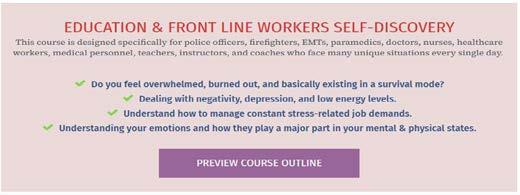
You can schedule a free self-discovery call by visiting www.journeytorealvision.com and clicking on the purple button directly from the main page of the website. Included in your free session is a Strengths + Core Values assessment.
If you’re experiencing burnout, exhaustion, frustration, and a lack of direction in your career, please make time to schedule an appointment. I will support, guide, and encourage you to discover more about yourself. If you have questions, please feel free to email me: chris@journeytorealvision.com.


Introduction:
In today’s fast-paced world, education is often seen as a means to secure a successful career. With advancements in technology and the increasing demand for specialized skills, our society has placed a significant emphasis on educational achievements and professional accomplishments. However, it is crucial to recognize that while education can undoubtedly pave the way for career advancement, it may fall short in cultivating essential character traits that contribute to a balanced and ethical society.
1. Narrow Focus on Technical Skills: Modern education systems often prioritize the acquisition of technical knowledge and job-specific skills, neglecting the holistic development of an individual’s character. As a result, we witness individuals excelling in their careers but lacking crucial values such as empathy, integrity, and social responsibility.
communication, empathy, and collaboration. Without these skills, individuals may struggle to build meaningful relationships, solve conflicts peacefully, and contribute positively to their communities.
Solutions:
1. Holistic Curriculum Design: Educational institutions should strive to incorporate character education into their curriculum, alongside technical subjects. This could include dedicated courses on ethics, social responsibility, emotional intelligence, and communication skills. By integrating these aspects into the education system, students would develop a strong foundation in both knowledge and character.
2. Lack of Ethical Education: The focus on academic achievement often overshadows the importance of ethics and moral values in education. Without proper guidance on ethical decision-making and the importance of personal integrity, individuals may prioritize personal gains over societal well-being, leading to a culture of self-centeredness and materialistic pursuits.
2. Role Models and Mentoring: Teachers and educators play a vital role in shaping students’ characters. By being role models themselves and providing mentorship, they can guide students towards developing qualities such as honesty, compassion, and resilience. Encouraging open discussions and promoting positive values within the classroom environment can foster character growth.
3. Emotional Intelligence Gap: Many educational institutions neglect the development of emotional intelligence, which is vital for effective
3. Community Engagement: To supplement the formal education system, active involvement in community service and volunteering activities can be encouraged. Engaging with diverse communities and addressing societal issues firsthand can instill empathy, teamwork, and a sense of social responsibility.
The Importance of Combining Career and Character:
1. Building Strong Relationships: Character traits such as integrity, empathy, and respect are crucial for developing healthy and meaningful relationships both personally and professionally. These qualities enable individuals to establish trust, collaborate effectively, and contribute positively to the collective welfare of society.
ensures long-term personal and professional fulfillment. Individuals with a strong character are more likely to overcome obstacles, display resilience, and inspire others, leading to sustainable success and a positive impact on society.
Conclusion:
2. Ethical Decision-Making: In a world where ethical challenges arise daily, individuals with strong character are more likely to make principled decisions that prioritize the greater good. Integrating character education into the academic realm equips individuals with the necessary moral compass to navigate complex situations with integrity.
While education undeniably contributes to career advancement, it is essential to remember that character development plays an equally vital role in shaping individuals and society. By incorporating character education, promoting ethical values, and emphasizing emotional intelligence, we can create a well-rounded education system that prepares individuals not only for successful careers but also for a life of integrity, compassion, and social responsibility. Striking a balance between career and character is essential for building a society based on values, fostering well-being, and creating a brighter future for generations to come.
3. Sustainable Success: While a successful career may provide material gains, it is character that



Alex covered three circular tables with contact paper. How much paper did he use if the tables had a diameter of 4 ft ?
How far will the train travel on the track?
What is the distance of 5 revolutions r=0.25 m

How many square inches of the 14 in pizza is left?
Lee had a watermelon shaped serving plate. How much food will fit on the plate? d=40 cm
How many square feet does this ball cover? r=6 in
Sue trimmed a circular garden with bricks. If each brick is 6 in, how many would she need for a garden with a diameter of 8 ft ?
What area is covered by the two hands marking 3 o’clock? d=32 cm
How many square inches of the 10 in pizza was eaten?

Find the circumference d=1.5 ft
Joe was trimming a circular pillow with lace. How much will he need for 2 pillows? d=1.4m
Find the area of watermelon slice?
d=5 in





Stan ate a quarter of the apple pie. How much pie did he eat if the pie was 46 cm across?
How many miles will the train travel after 12 times around the circular train track with a radius of 0.8 miles?
Maria made a rainbow. How much space did it cover if it was 25 cm long and 12.5 cm high?
What is the area of the Target sign with a diameter of 13 feet?

How much glass would a company need to cover 200 dials? 12 cm
How much space will the eyeball poster take up? r= 150cm

How long is the belt that is used for a waist that has a diameter of 33 ½ cm

What is the distance of 10 revolutions of tire with a radius of 9 ½ in?




How much of the dog’s face does the eye patch cover. r=5 cm

How much ribbon will you need for a headband for a hat with a d=9 ¾ in?
How many sq in is the red portion of this 4 in spinner?

Elaine wants to install 5 windows in her house. How much glass will she need? d=25 cm
A dog is tied to a post by a rope that is 4.6 ft long. What is the longest circle he can run around the yard?


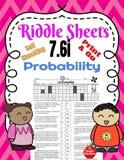

Ideal for :
Engaging Classwork Activities

Self Checking Digital Activities
Assessments
Homeschool Practice
I mine cal and mental bility Scavenger Hunt

This e-book is intended to entertain and bring back to memory a simpler, more innocent time.
without the author’s express written permission except by the authorized purchaser of this e-book
Note to teachers:
Volume discounts are available.
For more information contact: bruce@bvj.com.
This study guide is free with purchase of
“The Bully of Lakewood - Or How Inner Strength Won the Day!”
http://www.bvj.com/bully/TheBullyOfLakewood. html
Sign up for the Free News-Letter on Stories from Lakewood!


It is a tale of yesteryear in the last century. In days of old when boy scouts were bold.
They boldly went on long hikes, camped in the wild, climbed mountains, yes before cell phones, signaled to each other using signal flags, feel how they felt when they completed a mile swim, and learned many things, but also remembered to have fun along the way.
The Bully of Lakewood or How Inner Strength Won the Day! is copyrighted by Bruce A. Cooper of BVJ Company, Inc. No portion of this manual may be reprinted or reproduced in any way
http://www.bvj.com/bully/Signup.aspx
For Students:
Please review this web link:
https://www.wikihow.com/Deal-With-Bullies
Here is a summary of what was presented:
1. Deflect the bully with humor. Laugh it off to show the bully they can’t control your emotions.

6. Distract yourself from the bully. Use distraction tactics so the bully can’t see how you really feel.
7. Stick close to your friends. Bullies are less likely to pick on you when you’re not alone.
2. Avoid the bully as much as possible. When your bully doesn’t see you, they won’t bully you.
3. Ignore the bully and walk away. Pretend you can’t hear and deny them the satisfaction of getting to you.
4. Stand up for yourself. Gather your courage and firmly tell the bully, “no.”
5. Use neutral language to describe the bully’s actions. Unemotional language makes it easier to talk without getting upset.
8. Report the bullying to an authority figure. Tell an adult that you trust so they can help you deal with your bully.
9. Practice self-affirmations. Recite affirmations and remind yourself to be proud of who you are.
10. Stay positive. Resist the urge to insult your bully and sink down to their level.

11. Manage your stress. Stress-relieving techniques can make bullying feel less overwhelming.


12. Consider the bully from a new perspective. Bullies are unhappy people who take out their frustrations on others.
13. Help other people with their bullies. Stop the cycle of bullying by being an ally to other people.
• How did Brian describe the bully’s actions (find two places)?
• How did Brian and Larry’s walking together stop the bulling of Frank?
• What did Brian and Larry say to make Frank feel better?
• How did Brian and Larry use humor?
• Describe how positive boy scout experiences builds confidence and self-worth using at lease three examples from the story?
• How did Brian inner strength prevent the bully’s actions from being successful?
• How did the bully feel after his last encounter with Brian?
• What other actions could the boy scouts use to handle the bulling that was not presented in the story?
Additional Web Links with Further information to ponder:
https://www.verywellmind.com/how-to-dealwith-bullies-5213915
https://www.verywellmind.com/social-supportfor-psychological-health-4119970
In his youth, BRUCE was a Boy Scout and obtained the rank of Eagle Scout. He credits his parents’ encouragements as a major factor in obtaining the rank of Eagle. This story although fictional is loosely based on his experiences as a boy. It was a simpler and more innocent time. He hopes you enjoy reading this e-book and please encourage him to write more e-books.
“Bruce was a very diligent worker that required very little supervision. I could give him a complicated task and know with confidence that he would take it to completion. Bruce definitely enjoyed the technical aspects of any challenge that our project presented to him, but his interest in learning/understanding the associated business processes was where there was real value.”
--Patrick King
“Bruce is the only technical support specialist who has been a constant on the BOS upgrade project for the past eighteen months … Without Bruce’s expertise, thorough understanding of the GUI and back-end mechanics and of the system as well as their interactive behavior, his endless patience, and ability to translate business requirements to technical requirements and vice versa, the … release would never have been released successfully. Bruce has spent extraordinary amounts of time ramping up (several) new support personal both within his group and the EDB group. He has been invaluable in assisting the business in keeping momentum during the … release and moving this system in the right direction. I would like to recognize Bruce for his dedication to helping us get this system to where it needs to be to provide the necessary value to our branch representatives.”
--Cindy Cusolito, FC+A On-the-Spot-Award, Award Presenter
--Also signed by Bill Fox
“ … (Bruce of) BVJ Company has put into place a data extraction process that moves account and invoice information from our main database and will still keep our critical database protected from any performance impact or unauthorized access by our web server by allowing it to remain isolated from the Internet. … They have an excellent web viewer, the BVJ Customer Viewer, which can present that data in a meaningful way to our retailers. …In Conclusion, based upon what the BVJ Project has enabled us to do, namely allowing us to share the information within our existing database with our customers and employees in a safe and secure way, I would recommend that a BVJ Project implementation along with the BVJ Customer Viewer be undertaken in order to achieve customer good will, improve cash flow, and reduce the number of calls questioning on how information was processed. … BVJ›s automated system freed up more Time-to-Sell for our sales representatives and less time on administrative duties with customer satisfaction as an additional benefit.”
--Brian

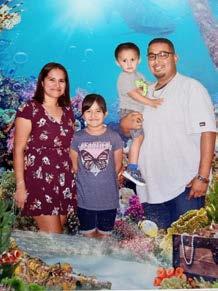 Campbell, Controller
Campbell, Controller
“Bruce - I don’t know what to say or how we can thank you for the way you have allowed Quiz Lab to turn your life upside down over the past couple of months. We would not be nearly as close to our goal without you and your stamina for the project. You have gone well beyond what we could have reasonably asked or expected. We were lucky that you came knocking on our door a few months ago.”
-- Kathy, Senior Manager at FEN

“Amen to that - thank you Bruce - as well as you Dan and Kathy (and everyone else).”
-- George, another Senior Manager at FEN
Are you having trouble passing that certification exam? Do you need a study partner? Perhaps you just need a personalized coach to get you through.

• One on one instruction,

• or small group discussions,

• whatever you need we got you.
• Turn to us for help.
We are located in San Antonio, Texas and can meet locally. If outside of San Antonio, zoom meetings can be scheduled.
The new school year is upon us. Time to leave your legacy of knowledge and selfconfidence.








